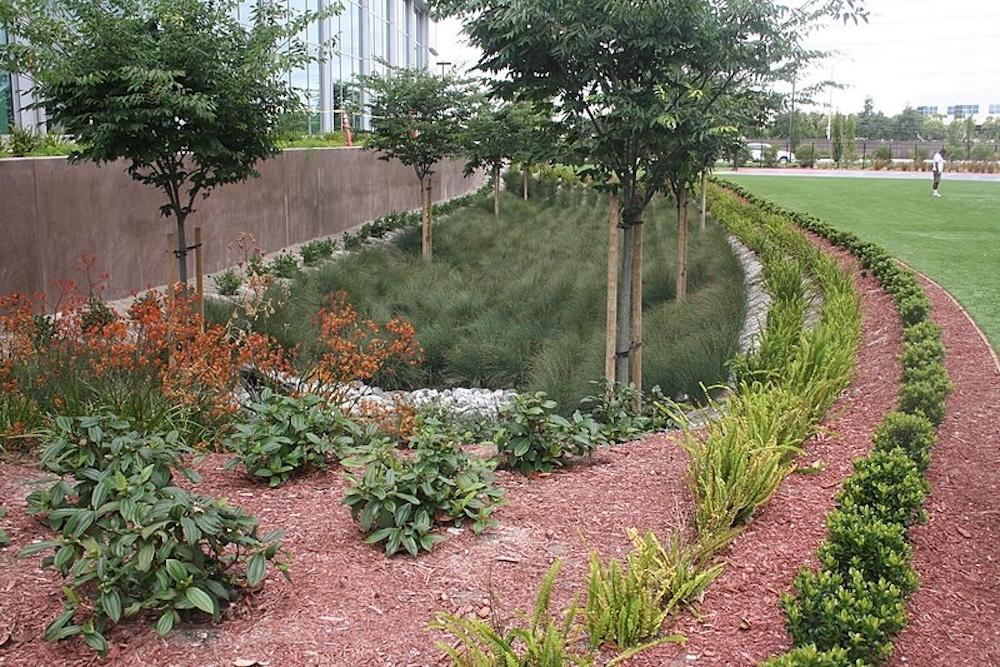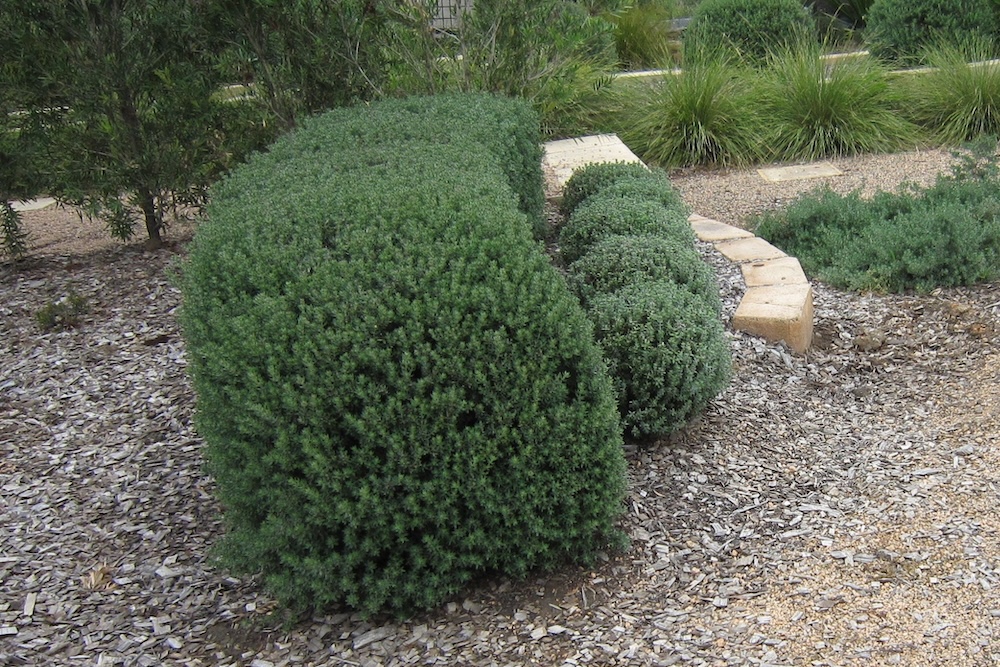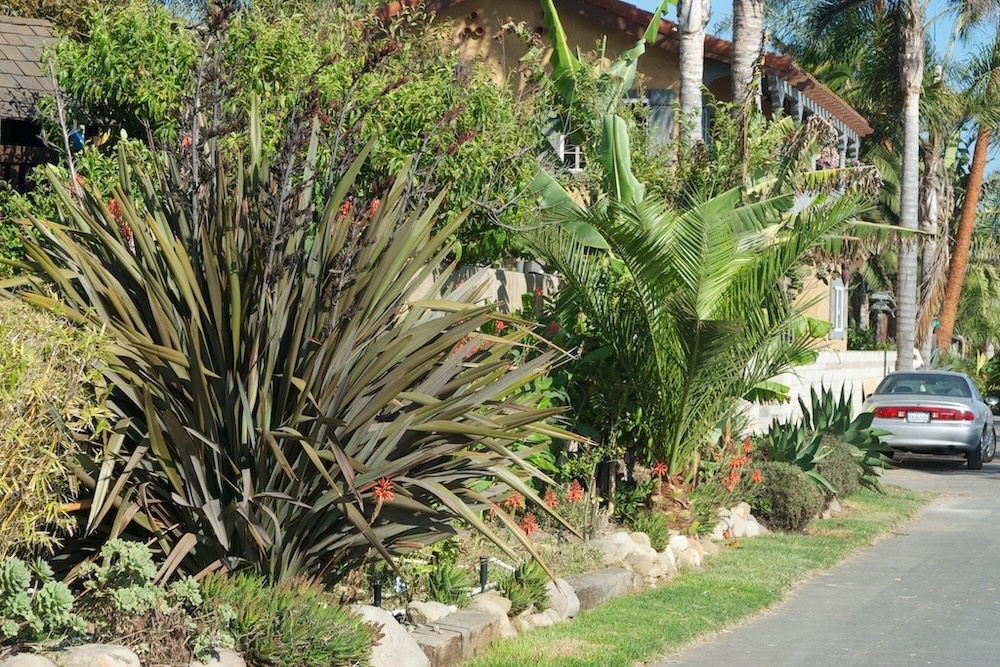Are you looking to add a touch of natural beauty to your garden or landscape while also supporting local ecosystems?
Best Plants for Bioswales: Filtering Rainwater Runoff for SUDS
Bioswales are a way to manage water runoff in both residential and public landscapes. The right selection of plants can optimise the performance of these natural drainage solutions, making them an important component of green infrastructure and Sustainable Urban Drainage Systems (SUDS).
Choosing the best plants for bioswales involves considering various factors, including the plant’s ability to tolerate varying water conditions, its root system, and its contribution to pollutant filtration and soil erosion prevention.
If we’re smart, we can also provide a range of habitat and pollination ecological services for biodiversity.

Understanding Bioswales
Bioswales are linear, channel-like features that are designed to concentrate and convey stormwater runoff while removing debris and pollution. They’re vegetated with plants that can withstand both high water levels and periods of drought.
They use the natural filtering properties of plants, along with their associated microbial communities, to filter and break down pollutants in the runoff. This process significantly improves water quality before it enters the local water system or is absorbed into the ground completely.
They also prevent the soil from becoming overly compacted or hydrophobic so that the water can filter through the top layer of soil into the root zone.
Why Plant Selection Matters in Bioswales
Plants play a pivotal role in the functionality of bioswales, primarily through extensive root systems that enhance water absorption and help bind the soil together, preventing erosion. They’re generally low maintenance because budgets rarely allow for manicuring SUDS.
They should also be able to withstand drought as well as wet feet, because of the lack of irrigation to keep them alive during years that experience little rain.
Choosing the wrong plants may mean that they die too quickly, leaving bare soil or areas where weeds colonise. This can lead to erosion or the spreading of noxious weed species throughout our country via our waterways.
Factors to Consider When Choosing Plants for Bioswales
When selecting the best plants for your bioswale, consider the following:
Soil type and drainage characteristics: Different plants thrive in different soil types and drainage conditions. Choose plants that are well-suited to the soil in your bioswale.
Climate and sunlight exposure: The climate and amount of sunlight the bioswale receives will significantly influence which plants will thrive there. Ensure the plants you choose are appropriate for your region and the specific conditions of the site.
Ability to tolerate wet and dry conditions: Bioswales often experience periods of flooding followed by periods of dryness. The plants chosen must be able to tolerate these fluctuating conditions.
Root system and growth habit: Plants with deep, extensive root systems are generally better for bioswales as they enhance water absorption and help prevent soil erosion. Similarly, plants with a low-growing, spreading habit can provide good ground cover and further aid in erosion control.
Low maintenance: Avoid fussy plants for bioswales if you don’t have the budget to maintain them.
Ecological services: Plants rarely ever serve a singular purpose. Bioswales are a chance to provide habitat and food sources for our urban fauna that may struggle to find them elsewhere.
Best Plants for Bioswales
Typical plants chosen for Australian bioswales include, but are not limited to: Acacia longifolia (Sydney wattle), Carex appressa (tall sedge), Lomandra longifolia (mat rush), Juncus flavidus (yellow rush), Melaleuca ericifolia (swamp paperbark), Goodenia ovata (hop goodenia).
However, your plant palette doesn’t have to be limited to these plants.
Wet Feet Research: Testing the Best Plants
Ozbreed has conducted extensive trials where we’ve tested plants for their resilience to waterlogged conditions, as well as their tolerance to drought. You can learn more about our trials here.
A lot of plants died in these trials. But a few of them proved themselves as truly resilient. Some of what we found was what we expected, such as certain lomandras being able to tolerate the wet. But we didn’t expect some of our callistemons and westringias to thrive the way they did, because they aren’t usually considered when it comes to bioswales.
This research gives us a reason to include plants like bottlebrushes and westringias in bioswales which are awesome pollinator plants and are particularly loved by residents.
Wet Feet Trial Results
The health and survival rates of Rhaphiolepis, Lomandra, and Westringia species varied. The study also found an inverse correlation between plant age and health, with younger Pennisetum plants dying while older ones survived.
Within the floodplain testing area, some plants were able to survive multiple floods and thrived, while others died or suffered from poor health after more than one flooding event.
So without further ado, here are the BEST bioswale plants that we found were extremely resilient in the face of heavy flooding and drought.

Best Plants for Bioswales
Callistemon
Slim™ Callistemon viminalis ‘CV01’ PBR: This cultivar is an ideal solution for narrow planting spaces where you need height. It boasts a slim form that doesn’t compromise on aesthetics, with vibrant red flowers that attract local fauna. However, due to its slender profile, it may not provide as much coverage as other varieties.
Macarthur™ Callistemon viminalis ‘LC01’ PBR: This bottle brush offers impressive resilience, making it a reliable choice for low-maintenance landscapes. Though it thrives best in full sun exposure, this may limit its use in shaded areas.
Better John™ Callistemon viminalis ‘LJ1’ PBR and Green John™ Callistemon viminalis ‘LJ23’ PBR: Both these cultivars are known for their robustness and richly coloured foliage. Regular pruning is recommended to maintain their compact form, but they still look great when allowed to express their natural habit in bioswales.
Imperata
Yalba™ Imperata cylindrica: This is a versatile grass that can adapt to a range of soil types, including those with poor fertility. Its unique silver-white colour and drought and frost tolerance make it a standout. However, it does require time to establish, and its rhizomes can get out of hand if it isn’t contained.
Liriope
Isabella® Liriope muscari ‘LIRF’ PBR, Just Right® Liriope muscari ‘LIRJ’ PBR & Amethyst™ Liriope muscari ‘LIRTP’ PBR: These cultivars exhibit lush, evergreen foliage and attractive flower spikes. They may struggle in areas with heavy clay soils.
Lomandra
Katie Belles™ Lomandra hystrix ‘LHBYF’ PBR & Lucky Stripe™ Lomandra hystrix ‘LMV200’ PBR: Both these cultivars are celebrated for their hardiness. They can adapt to various conditions including dry and wet soils.
Shara™ Lomandra fluviatilis ‘ABU7’ PBR & Evergreen Baby™ Lomandra labill ‘LM600’ PBR: Shara™ and Evergreen Baby™ are compact, hardy plants that are drought-tolerant but may need some protection from extreme heat.
Rhaphiolepis
Cosmic Pink™ Rhaphiolepis indica ‘RAPH02’ PBR & Cosmic White™ Rhaphiolepis indica ‘RAPH01’ PBR: These plants showcase large, star-shaped flowers. They require minimal maintenance but might struggle in heavily shaded areas.
Westringia
Grey Box™ Westringia fruticosa ‘WES04’ PBR & Mundi™ Westringia fruticosa ‘WES05’ PBR: These westringias are known for their grey-green foliage and small white flowers. Surprisingly, they both performed extremely well in our wet feet trials.
Pennisetum
Nafray® Pennisetum alopecuroides: This native cultivar features fluffy, bottlebrush-like flowers and gracefully arching leaves. It’s a robust plant that can adapt to various conditions but may require regular pruning to prevent it from becoming oversized. Its seeds aren’t weedy, so it’s a safe alternative for other Pennisetum varieties.
How to Establish and Maintain Your Bioswale Garden
Creating a bioswale garden requires careful planning and maintenance. The following steps will guide you through the process:
Site Preparation: Start by outlining the bioswale’s shape and depth. Remember, it should be designed to capture runoff from a specific area such as your roof or driveway. Excavate the site, ensuring the base is flat to distribute water evenly.
Plant Selection: Choose a mix of grasses, sedges, rushes, shrubs, small trees, and herbaceous perennials that can handle both wet and dry conditions. The plants’ root systems should be strong enough to hold the soil together and prevent erosion.
Planting: Plant in early autumn or spring when conditions are optimal for plant growth. Ensure taller plants don’t overshadow shorter ones that need full sun. Mulch around the plants to retain moisture and suppress weeds.
Watering: After planting, water thoroughly and regularly until the plants are established. Once established, the bioswale should only need additional watering during prolonged dry periods.
Pruning and Replacing Plants: Regularly check your bioswale for plant health. Prune where necessary, and replace any plants that aren’t thriving.
Bioswales with higher budgets can afford regular upkeep to ensure the area always looks its best. On the other hand, lower-budget bioswales should focus on choosing hardy, low-maintenance plants that can thrive with minimal intervention, except for occasional weed control.
Daniel’s Wrap
Choosing the right plants for your bioswale is integral to its success. Not only do these plants help manage rainwater runoff, but they also contribute to the larger goal of creating sustainable and resilient urban landscapes.
Whether you’re an experienced home gardener or a professional landscape architect, incorporating bioswales into your projects can significantly contribute to green infrastructure efforts.
Consider the potential of bioswales in your future landscaping endeavours, and play a part in creating greener, healthier urban spaces.




This Post Has 0 Comments